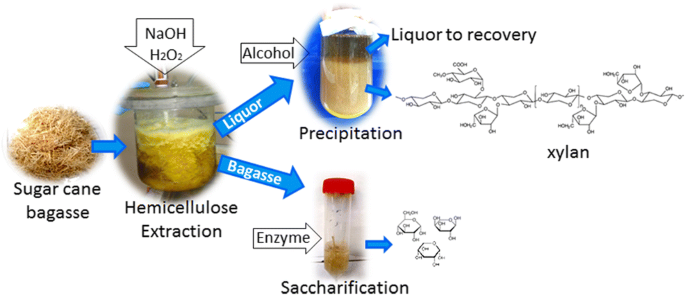Comprehensive Cane Sugar Processing Chemicals: From Beginning To End
Wiki Article
Maximizar Rendimientos Y Minimizar Costos: Estrategias Avanzadas Para La Optimización Química Del Procesamiento De Azúcar De Caña
In the world of cane sugar handling, the pursuit of making the most of yields while simultaneously decreasing expenses stands as an awesome challenge that needs a critical blend of sophisticated chemical optimization techniques. The ins and outs of this undertaking explore the core of effectiveness, where every component of the process plays a vital role in accomplishing optimum outcomes. By exploring the ins and outs of chemical evaluation, enzyme utilization, pH control, filtration, and distillation techniques, a landscape abundant with possibilities for enhancement and technology arises. Among this detailed internet of strategies lies the guarantee of unlocking untapped capacity and changing the very essence of sugar production. Cane Sugar Processing Chemicals.Chemical Analysis for Efficiency
Chemical evaluation plays a crucial duty in improving the effectiveness of sugar walking stick processing by offering essential insights right into the make-up and residential or commercial properties of the raw materials. By performing in-depth chemical analyses on sugar walking stick samples, cpus can figure out the exact focus of sucrose, sugar, fructose, and other elements existing in the raw material. This information is essential for optimizing the various stages of the sugar walking stick handling chain, from grating to crystallization.Furthermore, chemical analysis enables processors to determine contaminations such as natural acids, healthy proteins, and minerals that can impact the quality and return of the final sugar item. By quantifying these contaminations, cpus can apply targeted approaches to get rid of or reduce their impacts, inevitably boosting the overall efficiency of the processing plant.
In addition, chemical evaluation helps with the surveillance of procedure specifications such as pH, temperature, and thickness, allowing cpus to make real-time changes to guarantee optimum conditions for sugar extraction and formation. Overall, a thorough understanding of the chemical composition of sugar cane is essential for taking full advantage of returns, minimizing expenses, and keeping high item quality in the sugar production market.

Enzyme Utilization for Boosted Yields
With a calculated approach to enzyme use, sugar cane processors can significantly boost their returns while maintaining functional efficiency in the production procedure. Enzymes play an essential function in sugar cane handling by breaking down complicated carbohydrates into easier sugars, hence enhancing the general sugar removal efficiency. By integrating certain enzymes customized to target the different elements of sugar walking cane, such as cellulose and hemicellulose, processors can improve the release of sugars throughout removal.Enzyme utilization provides the benefit of making the most of sugar yields from the raw product while minimizing the power and sources needed for processing. This results in a much more sustainable and cost-efficient manufacturing process. In check my site addition, enzymes can aid in decreasing processing time and improving the general top quality of the sugar item. Via mindful selection and application of check that enzymes, sugar cane processors can maximize their procedures to accomplish greater returns and productivity.
Ph Control for Optimum Processing
Enzyme use for raised returns in sugar walking stick handling lays the foundation for dealing with the vital element of pH control for optimal handling performance. Preserving the proper pH level throughout various stages of sugar cane handling is necessary for maximizing returns and lessening costs. pH control is specifically crucial throughout the extraction and clarification procedures. In the removal stage, keeping the right pH helps in attaining effective sucrose extraction from the walking stick. Controlling the pH throughout information help in the precipitation of impurities and non-sucrose parts, resulting in a purer end product. PH affects the activity of enzymes included in the breakdown of macromolecules, influencing the overall performance of the process. By carefully monitoring and readjusting the pH levels at different handling steps, sugar walking stick processors can improve sugar recovery prices, lower chemical use, and enhance the total production procedure. Effective pH control not only enhances the top quality of the end product yet likewise contributes to sustainable and cost-efficient sugar cane processing procedures.Advanced Filtering Methods
Implementing sophisticated purification techniques in sugar walking stick processing improves the efficiency and purity of the end product through refined separation methods. By including cutting-edge purification modern technologies, such as membrane layer purification and triggered carbon filtering, sugar cane processing plants can achieve higher degrees of sugar healing and enhanced quality control.
Activated carbon filtration is another innovative strategy that helps in the removal of colorants, off-flavors, and residual impurities from sugar walking stick items. By using activated carbon's adsorption homes, this filtration method boosts the clearness and taste of the sugar, fulfilling the high requirements demanded by consumers and sector guidelines.
Energy-Efficient Distillation Approaches
Energy-efficient distillation approaches are vital for optimizing the sugar walking stick processing market's power consumption while preserving top quality item requirements. Typical distillation procedures can be energy-intensive, resulting in greater manufacturing expenses and ecological influences (Cane Sugar Processing Chemicals). Executing energy-efficient purification methods, such as vacuum cleaner purification or molecular distillation, can substantially reduce power needs while improving general procedure efficiencyVacuum cleaner purification involves reducing the stress within the purification system, which lowers the boiling point of the fluid combination being processed. This reduction in boiling point lowers the energy needed for vaporization, leading to power financial savings compared to traditional purification approaches.
On the various other hand, molecular distillation uses brief course purification methods under high vacuum problems to different substances based upon their molecular weight. This Our site approach is particularly effective for heat-sensitive compounds, as it operates at lower temperature levels, lowering power consumption and preserving product quality.
Conclusion

Report this wiki page